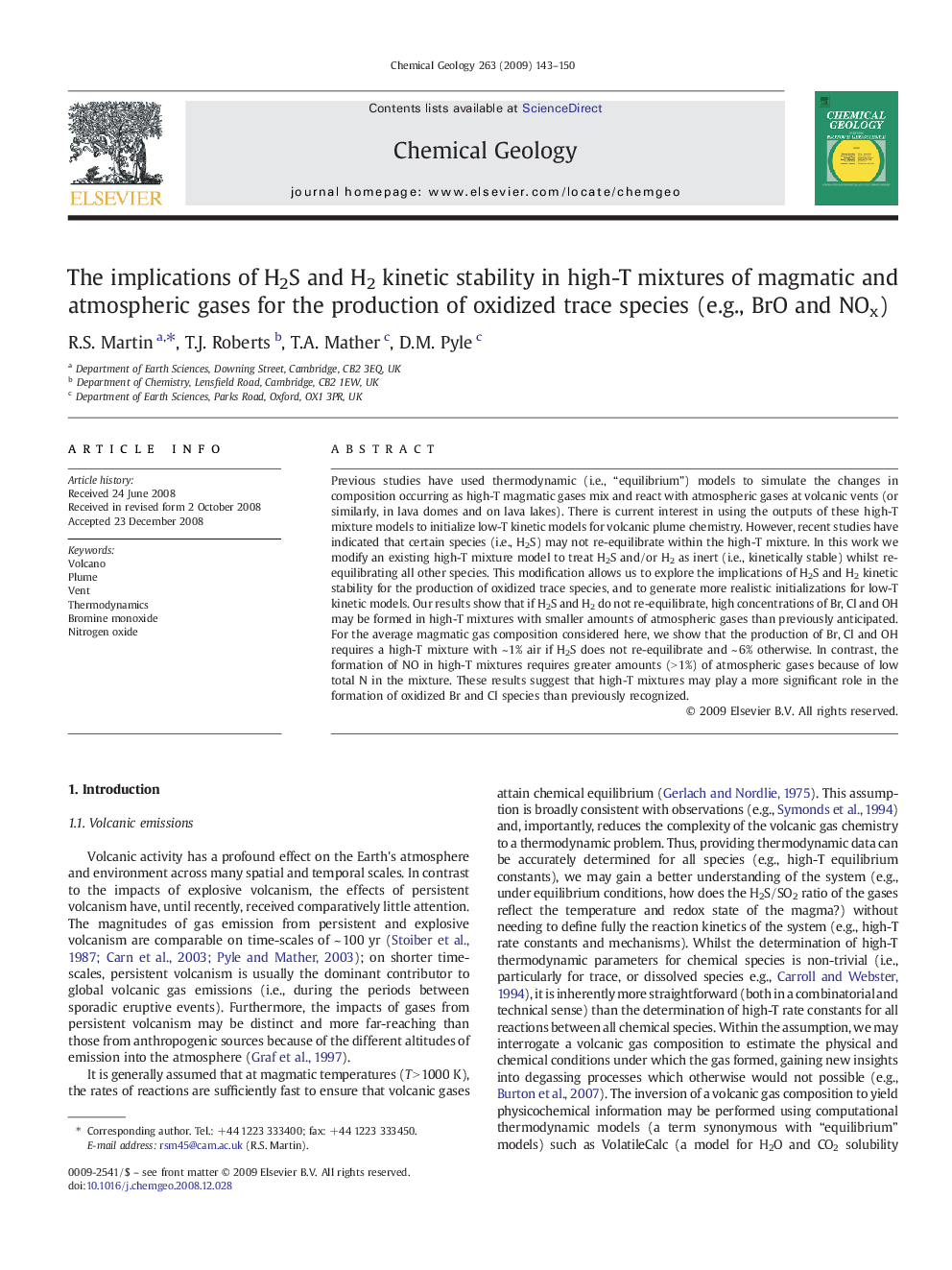| Article ID | Journal | Published Year | Pages | File Type |
|---|---|---|---|---|
| 4700253 | Chemical Geology | 2009 | 8 Pages |
Abstract
Previous studies have used thermodynamic (i.e., “equilibrium”) models to simulate the changes in composition occurring as high-T magmatic gases mix and react with atmospheric gases at volcanic vents (or similarly, in lava domes and on lava lakes). There is current interest in using the outputs of these high-T mixture models to initialize low-T kinetic models for volcanic plume chemistry. However, recent studies have indicated that certain species (i.e., H2S) may not re-equilibrate within the high-T mixture. In this work we modify an existing high-T mixture model to treat H2S and/or H2 as inert (i.e., kinetically stable) whilst re-equilibrating all other species. This modification allows us to explore the implications of H2S and H2 kinetic stability for the production of oxidized trace species, and to generate more realistic initializations for low-T kinetic models. Our results show that if H2S and H2 do not re-equilibrate, high concentrations of Br, Cl and OH may be formed in high-T mixtures with smaller amounts of atmospheric gases than previously anticipated. For the average magmatic gas composition considered here, we show that the production of Br, Cl and OH requires a high-T mixture with ~Â 1% air if H2S does not re-equilibrate and ~Â 6% otherwise. In contrast, the formation of NO in high-T mixtures requires greater amounts (>Â 1%) of atmospheric gases because of low total N in the mixture. These results suggest that high-T mixtures may play a more significant role in the formation of oxidized Br and Cl species than previously recognized.
Related Topics
Physical Sciences and Engineering
Earth and Planetary Sciences
Geochemistry and Petrology
Authors
R.S. Martin, T.J. Roberts, T.A. Mather, D.M. Pyle,
